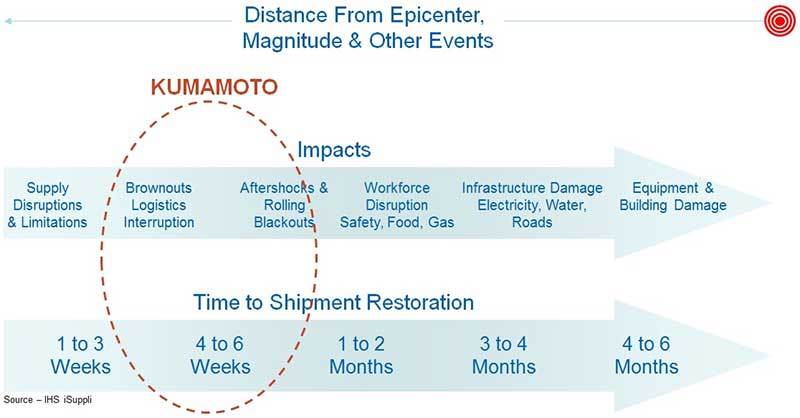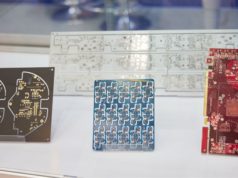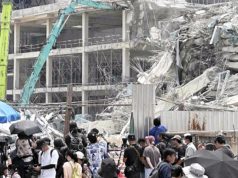This past Monday marked the one-month anniversary of the earthquake that struck Japan on March 11. As the country braces for aftershocks in the months to come, businesses around the world are steeling themselves against ripples in their global supply chains. In a recent community briefing, MIT experts spoke about the earthquake’s effects on supply chains for both commercial products and humanitarian aid.
Yossi Sheffi, director of the Center for Transportation and Logistics, said the growing disaster in Japan is already affecting companies throughout the world. Using examples from the automotive industry, the aerospace industry and the high tech industry, he explained the complexity and intricacy of global supply chains, noting that many of the supply chain implications are not known yet. Only one month after the earthquake, ships are still at sea with product dispatched before the earthquake and many companies will continuously discover dependencies on third- and fourth-tier suppliers.
He noted specifically how the situation in Japan could hamper production of Apple’s iPad 2. The company relies on Japanese suppliers for many parts, including the iPad’s lithium-ion batteries and the overlay glass that covers the screen. Sheffi said the overlay glass supplier has suffered serious damage in two of its plants, and the battery manufacturer, located 37 miles from the damaged Fukushima Daiichi nuclear power plant, has shut down.
In addition, a subsidiary of Mitsubishi that manufacturers an epoxy resin, used in the iPad printed circuit board, has shut down as a result of the earthquake, though it is working to get production restarted. Sheffi said that in the normal supply chain of events, the resin would have been shipped to a manufacturer in Taiwan, which builds semiconductors and sends them to China, where the iPad is assembled and then distributed all over the world. “And here’s a fourth-tier supplier, four-deep into this supply chain, who may be causing real problems in the manufacturing and supply of the iPad,” said Sheffi, who is also director of MIT’s Engineering Systems Division.
The earthquake also shook up the supply chains for General Motors and French automaker Peugeot Citroën, Sheffi said. Both had to temporarily halt production of certain vehicles and shut down plants because of a lack of parts from Japanese companies.
In the months ahead, Sheffi said companies such as Apple and GM will have to find ways to overcome disruptions to their supply chains, in order to get back to normal production levels. What makes a business resilient in the face of a major disruption, he noted, comes down to a number of factors, including active communication within a company and deference to expertise over rank. “It’s easier to respond [to a disruption] if you give the power to respond to the people close to the action,” Sheffi said.
As businesses grapple with the earthquake’s effects on supplies coming out of Japan, humanitarian-aid organizations are looking for better ways to get supplies into the country. Jarrod Goentzel, executive director of the MIT Supply Chain Management Program, said providing effective humanitarian aid is a serious supply chain challenge. Goentzel has worked with humanitarian and global health organizations to improve their supply chains for food, water and medical supplies.
“In the initial stages [of a disaster], a lot of organizations will start pushing supplies out in a templated response, anticipating what they think will be the situation,” Goentzel said. “But quickly they want to transition to getting data from the ground … because you don’t want to be pushing supplies in a constrained area where it might not be needed.”
For example, while food and water are usually the commodities in highest demand following a disaster, Goentzel said that in northern Japan, where there were snowstorms immediately following the earthquake, shelter and warmth became the primary need. Fuel and electricity therefore became critical commodities. “Fuel shortages are one of the big issues in Japan now, as well as the rolling blackouts, affecting the ability to provide warmth,” Goentzel said.
In the immediate aftermath of the earthquake and tsunami, many people who lost their homes found temporary shelter in gymnasiums and schools. The government is now working to set up transitional shelter in northern Japan so that emergency shelter facilities — such as schools — can reopen. However, Goentzel said officials have run up against another constraint that limits construction of temporary shelter in the region.
“Given the hilly terrain in that part of the country, it’s difficult to find flat, open spaces for transitional shelter,” Goentzel said, noting a recent Japanese government report that only 8 percent of the land needed for the construction has been secured so far. “So the chain of supplies to build the structures needs to be aligned with the procurement of appropriate land.”
Eventually, Goentzel said, the humanitarian effort will have to shift its focus from setting up transitional shelters to providing permanent housing for refugees in Japan. Goentzel, who worked with MIT students to assess the humanitarian needs in Haiti after the earthquake last year, said one year after that disaster, “a permanent solution is still an ongoing challenge … the process of rebuilding is going to be long in terms of the supplies and capabilities needed to provide permanent housing.”
 Dell Inspiron Mini 1018 4034CLB Netbook (Clear Black)
Dell Inspiron Mini 1018 4034CLB Netbook (Clear Black)The newly designed Inspiron Mini 10 is a lightweight mobile net book that goes anywhere with you, so it’s always easy to check y…
 Acer Aspire One AOD255E-13639 10.1-Inch Netbook (Diamond Black)
Acer Aspire One AOD255E-13639 10.1-Inch Netbook (Diamond Black)Acer AOD255E-13639 comes with these high level Specs. Intel® Atom™ Processor N455, Windows® 7 Starter, 10.1″ WSVGA LED-backlit…






